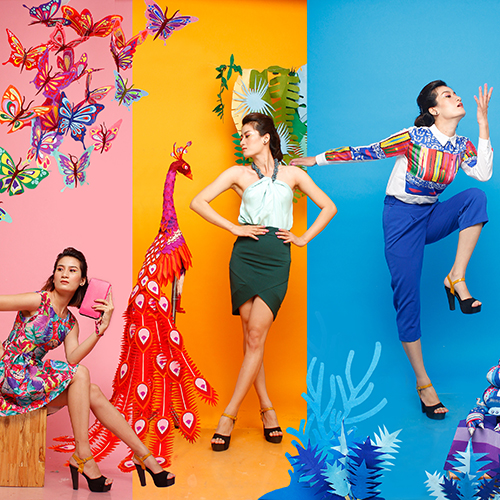11 May 2022
 From balaclavas to cowgirl hats - and even the return of low-rise jeans - whatever the latest trends, they’re sure to fly from catwalks to consumers the moment that models leave the stage at the Australian Fashion Week next week.
From balaclavas to cowgirl hats - and even the return of low-rise jeans - whatever the latest trends, they’re sure to fly from catwalks to consumers the moment that models leave the stage at the Australian Fashion Week next week.
But before fashionistas spend up big, University of South Australia researchers are encouraging buyers to reconsider flighty purchases and take a moment to better understand trending of ‘fast’ fashion and its impact on the environment.
In a new study led by UniSA PhD candidate Erin Skinner, researchers explored Australians’ knowledge of fast and slow fashion, finding that general consumers not only lacked an understanding of the issues, but were also averse or unable to change their buying habits to support more sustainable options.
With Australians overrepresented as one of the largest consumers of textiles globally, UniSA researchers say government and the fashion industry have an obligation to better educate consumers about the impact of fast fashion and provide alternative options and models.
“Fast fashion is all about demand-driven clothing, where buyers snap up the newest fashion styles at the height of their popularity, only to discard them after a few wears,” Skinner says.
“But keeping up with the latest trends comes at a price. Every year, Australians each consume more than 27kgs of textiles, discarding 23 kg of this into landfill. That’s an extraordinary 6000kg every 10 minutes – or the equivalent of the weight of an African elephant.
“But it’s not only landfill, globally the fashion industry produces about 20 per cent of the world’s wastewater. This translates into 2700 litres of water to make one cotton T-shirt – enough water for one person to drink for nearly two and a half years.
“And when it comes to CO2 emissions, the fashion industry produces more emissions than the shipping and aviation industries combined.
“Such phenomenal waste is clearly unsustainable, so it’s vital that the sector educates consumers about alternative options.
“This could mean highlighting the value for money that comes with buying fewer, long-lasting garments, boosting the hire-clothing sector, using online influencers to educate, or looking to more accessible and online second-hand items.
“Ultimately, we need a shift in consumer knowledge and attitudes. This is where our research comes in. By clarifying what the average Australian knows or thinks about sustainable fashion we will be able to design appropriate solutions and policy changes to better support ‘slow’ fashion.”
The next stage of the research will examine whether psychological tools applied in an intervention-style pilot can help reduce the frequency of clothes shopping in people who shop frequently.
Notes to editors:
Three tips to make positive changes to your wardrobe and protect the environment:
- Step off the ‘trend-mill’; spend some time considering your personal style so you aren’t tempted by every influencer micro-trend.
- Shop your wardrobe! The most sustainable garment is the one you already have- wear it.
- Remember: loved clothes last. No matter where you shop from, treat your clothes with kindness so they last as long as possible.
…………………………………………………………………………………………………………………………
Contact for interview: Erin Skinner E: Erin.Skinner@unisa.edu.au
Media contact: Annabel Mansfield M: +61 479 182 489 E: Annabel.Mansfield@unisa.edu.au



